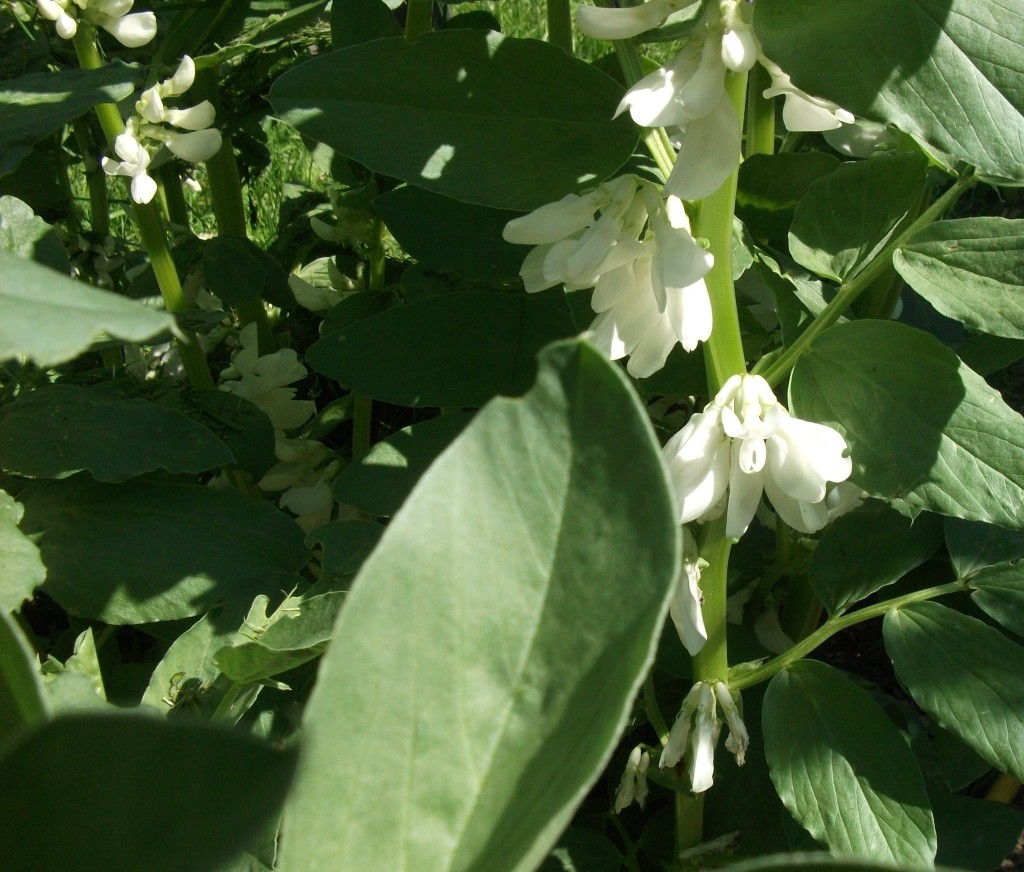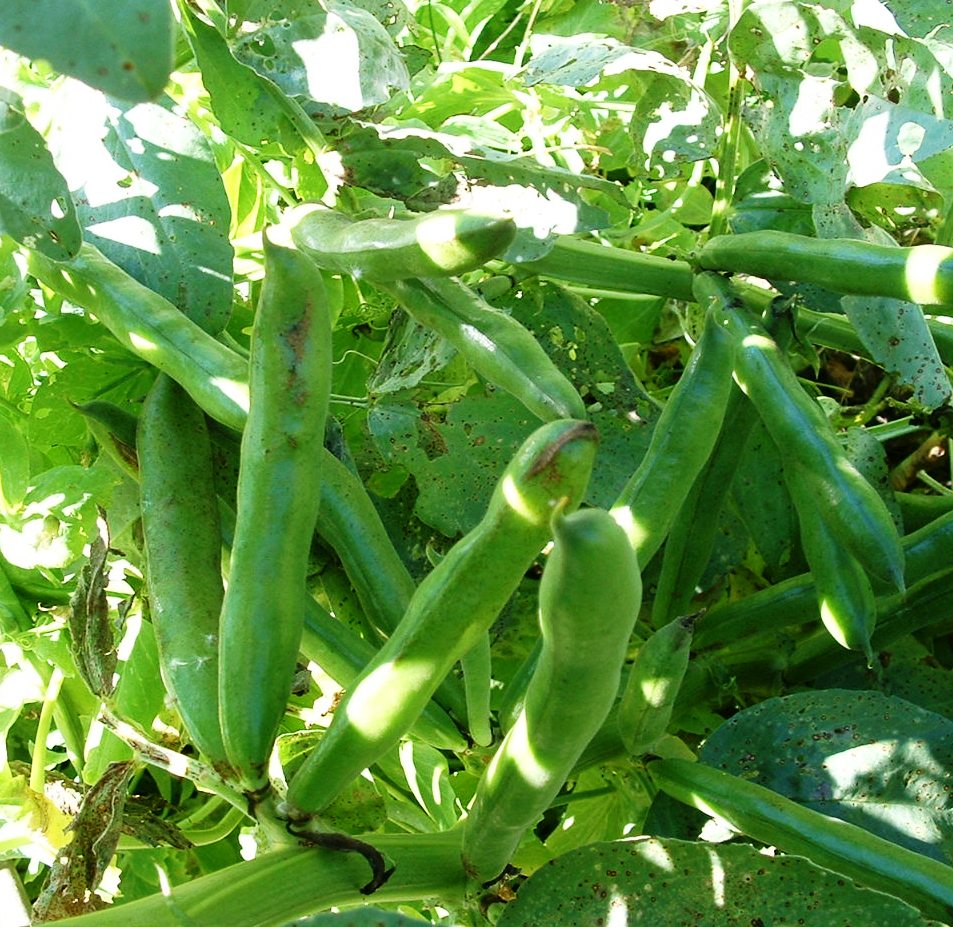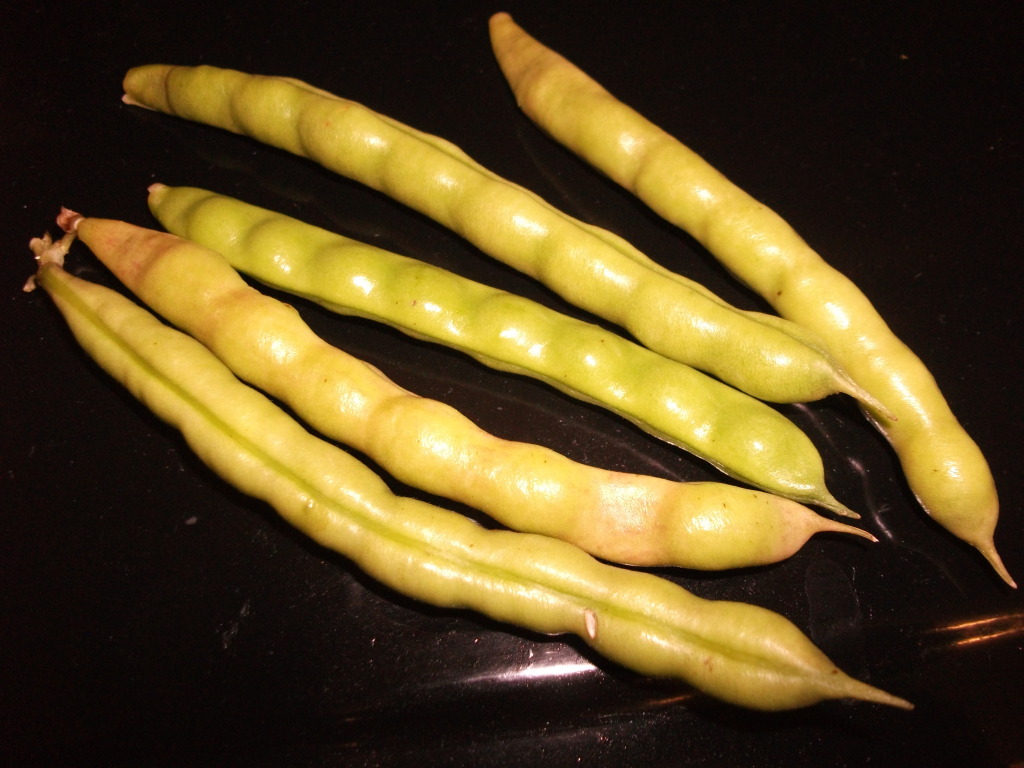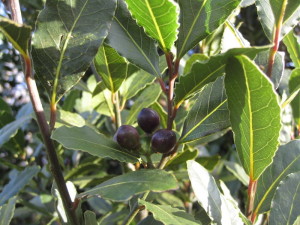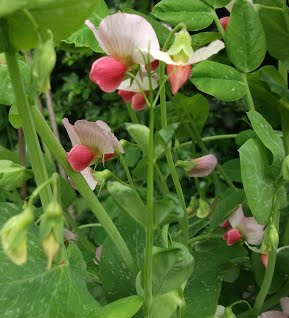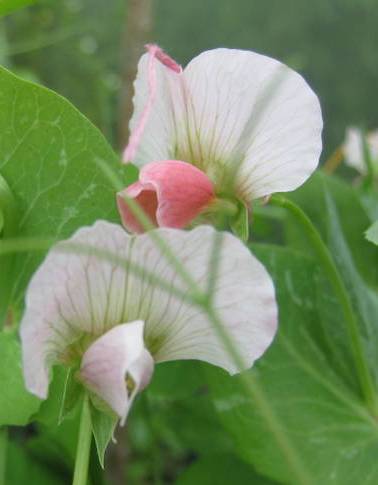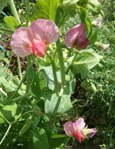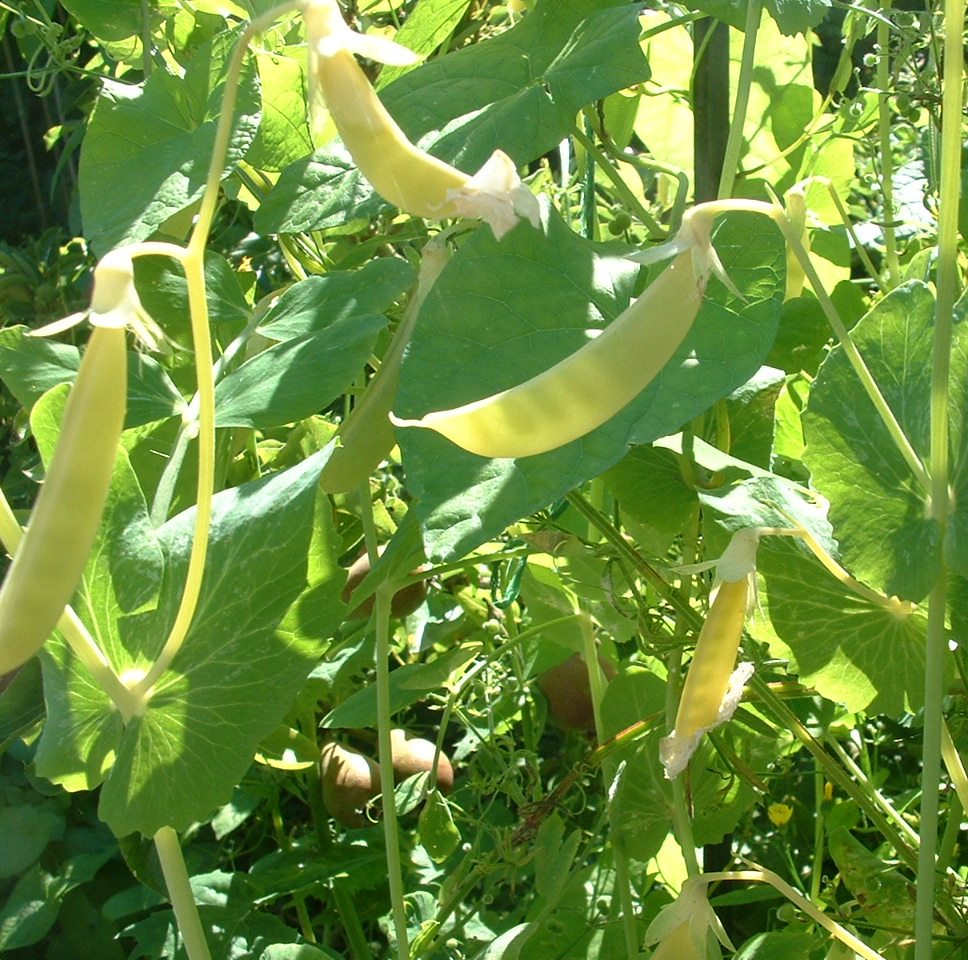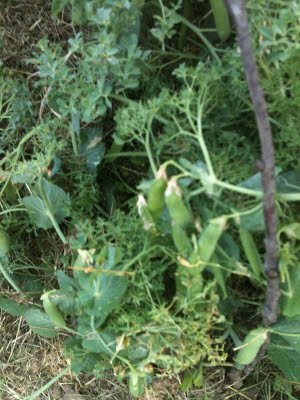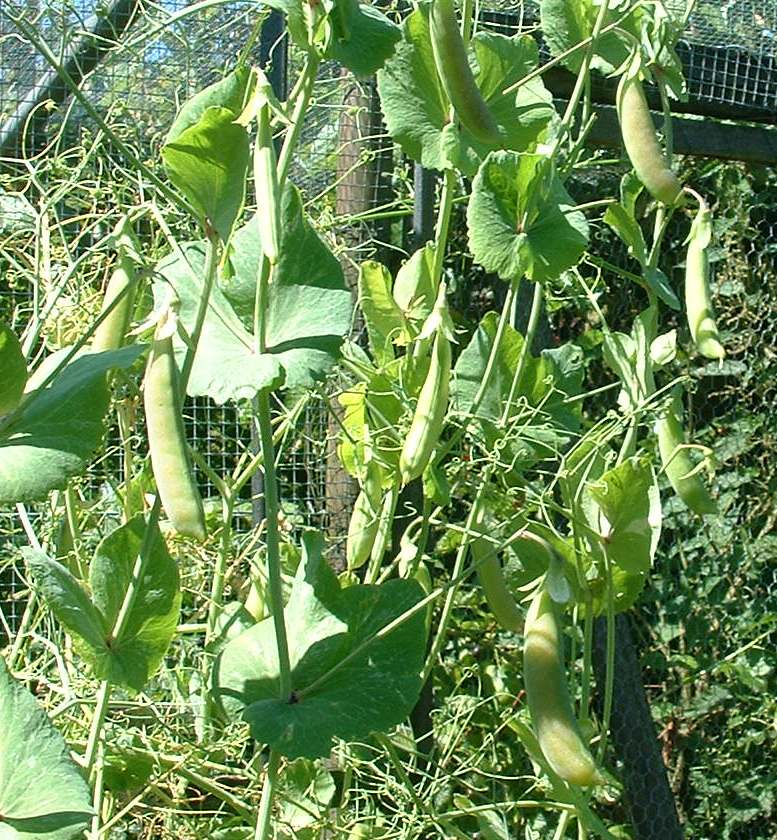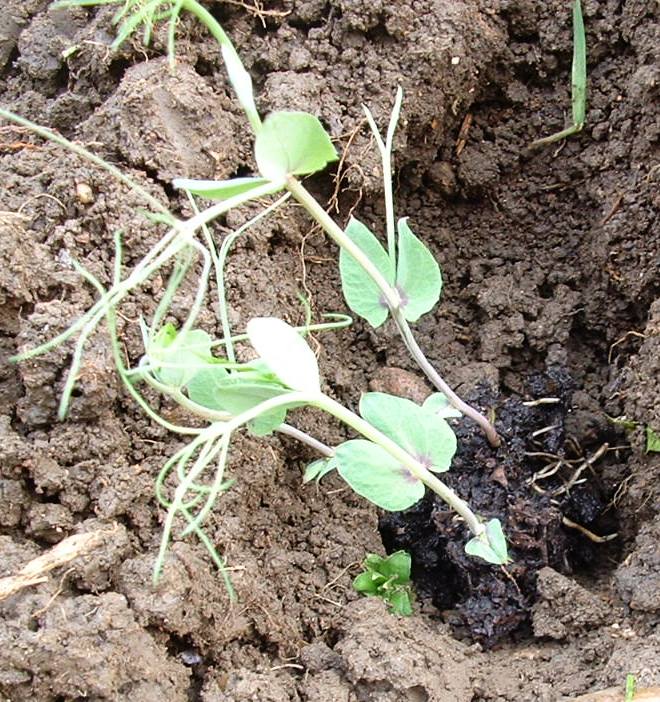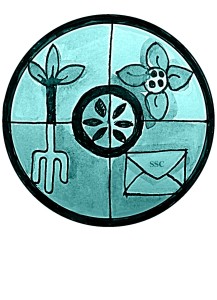 Taking Part
Taking Part
Poolcue, Riesentraube tomatoes and Black Hungarian chilli peppers.
Aj: Dobbie’s Purple Beetroot, Redlands Greenleaf dwarf bean, Flavert dwarf bean, Aranyalma tomato.
Nigel B: Blauwschokker peas and ‘Eat Me’ mange tout
Jeannine, very kindly sent us seeds to enjoy and share; Soya beans- Black Jet, Tohya and Butterbean. Lima Bean – Henderson and Fordhook242. Chilli – Pretty in Purple Filius Blue and Pepperdew. Tomato – Madame Jardel’s Black and great White. Sweet Pepper Yankee Bell. Minature White Cucumber, Small selection of corn.
Seed Parcel
Allium
Baun Onion – I received Baun onion seed from Irish seed Savers and found them easy to grow, flavour is robust and they do store very well. A nice onion worth growing. There doesn’t seem to be much information about these onions but I did find a couple of articles on the web, I thought they were worth listing to help preserve the onions history;
“Our staff recently re-patriated the Irish variety Baun Onion from a list of accessions held at Wellesbourne genebank. ‘Baun’ means longlife in Irish and true to the name this is a long-keeping onion that we now maintain in the ISSA collection.” agrobiodiversity
This is taken from Irish Seed Savers “I also received an interesting history of the Baun onion (thanks to Kieran Crombie) which we grew for seed last year. Barney Crombie began work on developing and trialling a new cultivar of onion in the seventies after his retirement from An Foras Taluntis. He worked on an onion that would store better and keep longer than any cultivar before and called it the baun onion. Before his death he gave some seed to gene banks and I believe this is what we had returned from the Wellsbourne collection. It makes this job so special when the little patterns of history link together to create a fuller picture”. Irish Seed Savers

Beans (Broad)
Kaulion Valkea (Kaulion’s White) – This is Finnish landrace broad bean from Savitaipale (South-Eastern Finland). Bean seeds are small and pale, occasional purple one may ‘pop up’. Paler coloured ones have milder flavour and although some selection is gone towards keeping colour pure, it is not 100% stable. I did grow few purple seeds separate in greenhouse, but all seeds from those plants were ‘white’. The plants grow about 70-100 cm tall and are said to very frost tolerant. I’ve only grown these from late spring onwards so cannot comment any further about hardiness, but coming from Finland, their ‘frost’ is UK ‘FREEZING COLD! So should be able to take our weather. Fresh beans are used as traditionally in UK, but in Finland they also use them same as dried peas, soaked overnight, rapid boiled and the simmered soft to make bean soup or used in other foods.
Oldambster Wierboon – This Dutch landrace broad bean has been given to me by Jaap Vlaming, a Dutch seedsaver who is very active in keeping traditional Dutch vegetable varieties in circulation. This variety is fairly compact and needs minimal staking. It has pure white fragrant flowers, which produce pods of 4, max 5 delicious nutty bean seeds. Whilst there are fewer seeds in the pods than modern longpod varieties, most nodes produce 2, 3 and even 4 pods. Also most plants branch at the base and appreciate a bit more growing room. The yield is high and spaced over many weeks. Last pods for eating were harvested mid-August, long after the first black, dry pods for seed had been collected.
Trail of Tears Bean – Climber, old Native American variety. Very reliable; abundant thin green pods and small black beans.
Dwarf French Beans (phaseolus vulgaris)
Flavert – An early pale green seeded flageolet bean. Shared by AJ, Linear Legume Blog
Georgian #2 – My original seed donor, the Dutch seedsaver Jaap Vlaming, asked an acquaintance from the Republic of Georgia for traditional Georgian bean seeds. To his amazement and delight, he received 40 different little packages of bean seeds, some with several varieties inside – none were named. This bean was from package number 2. A dwarf French bean with very large red and white seeds. Best for shelling fresh, when the seeds are mature, or for drying. These beans make an excellent bean salad in a vinaigrette and with finely chopped shallots, but they are equally good added to winter stews.
Reade Krobbe – Very old Frisian dry bean
Redlands Greenleaf – I believe a variety sourced from Heritage Seed Library.
Wieringer Boon – A very old Dutch dry-bean lost in Holland but found in the States and brought back to Holland.
Beans Runner (Phaseolus coccineus)
Black Pod – A variety held and shared by the Heritage Seed Library. This is a lovely runner bean, easy to grow and beautiful to look at, producing a large crop of medium length beans. As with many runners, best picked and eaten while still young or it gets stringy. The beautiful red-black pods colour increases as the pods age.
Beetroot (Beta vulgaris)
Dobbie’s Purple Beetroot –
Brassica
Eeuwig Moes (Brassica oleracea var ramosa) – This is a perennial kale, a very old Dutch heirloom, dating back to 1800’s and some suggest maybe even as far back as the Roman era. Grows 3-4′ high with dark green leaves which can be harvested year round, young leaves are good as a spring type cabbage early in the season. Grow in full sun, although will tolerate some shade and can be grown from seed or cuttings.
Ragged Jack Kale – An old UK variety which looks very like Red Russian. Plant small plants one and a half to two feet apart. This is the first time I’ve saved brassica seed, but I didn’t notice any flowering on other peoples’ plots, so it should come true.
Cucumber
Tamra –
Herbs
Bay Tree (Laurus nobilis) – An attractive evergreen shrub, I’ve found it easy to grow and trouble free, so far my tree has been winter in SW Wales, but maybe not fully hardy in all areas. These can be grown in pots and shaped. I believe a male and female tree is needed for pollination, although I’ve only a female and it sets seeds well enough. Seeds ripen late winter and need to be sown fresh, I’ve had good results from sowing seeds whole and those with the outer skin removed. They germinate in late spring. The leaves may be used fresh or dried in cooking, giving a lovely flavour to soups, casseroles and sauces.
Bay leaves and berries
Greek Cress – Finely divided leaves, a very decorative cress and easy to grow. Copes well with low light levels and low temperatures over winter in the greenhouse or under cloches. Can take quite a bit of frost. One of the staples of my winter garden. I shared seeds and was asked, ‘can this be grown on the windowsill?’ I had to try it and yes, very easy, on a thin layer of potting compost or on a folded kitchen towel in a small recycled plastic tray or plastic cup. Naturally this cress can be sown in spring too, but runs to seed quickly when the weather gets hot. My original seeds came from the first ever seed swap at HDRA (now GO).
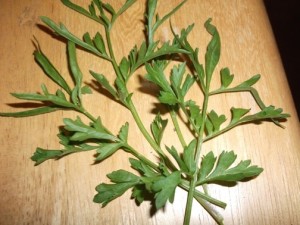
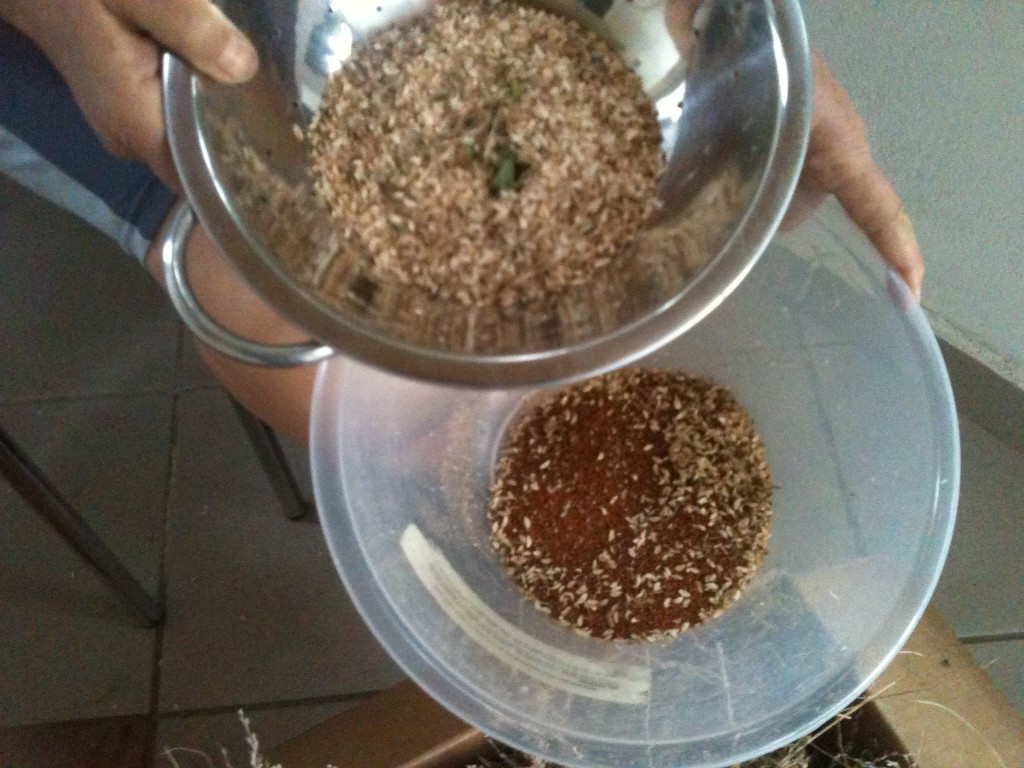
Fruit
Ground Cherry (physalis pruinosa) Cossack Pineapple – This is a solanum and somewhat similar to the more familiar ‘Cape Gooseberry’ available in supermarkets. The cherry sized fruits are also in papery husks. But the ground cherry has smaller plants and smaller, yellow fruits with slightly translucent skin. And it is much easier to grow. I grow them just like greenhouse tomatoes, but they could be grown under a large cloche or in a sheltered position outside. They are much smaller than tomatoes, more the size of pepper plants, therefore suitable for growing in pots. Although they are solanums, I have never seen blight on them. I sow them indoors and transplant after last frost, same as tomatoes. The plants will grow to 3-4ft tall and produce pretty yellow flowers, which turn into ‘lanterns’, first green, later papery. When they are papery, the fruit inside turns yellow. Ripe fruits fall off the plants with their lanterns. They can be stored in a basket for a couple of months. The fruits ripen over a few months from late August to frost. Their flavour is somewhat akin to pineapple, very pleasant ‘tropical’. Seeds are very small.
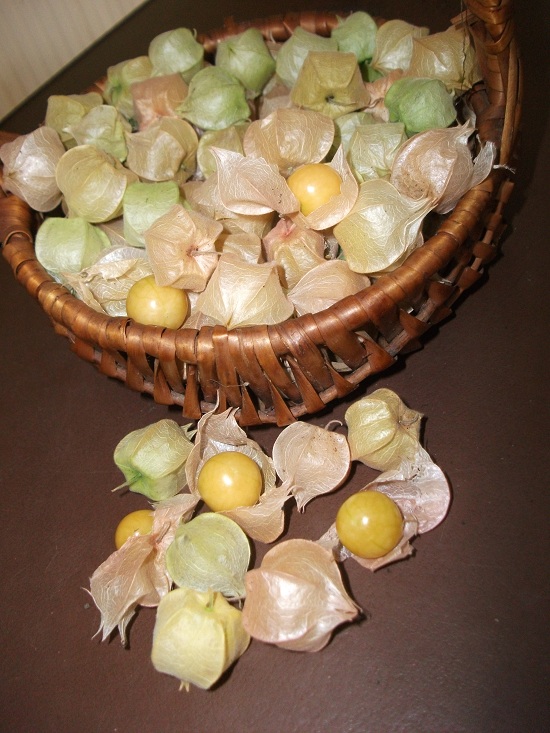
Lettuce
Lattughino Biondo Ricciolino di Trieste – This variety has been stored in the Gatersleben seedbank since 1990 when it was acquired from Italy. Its code is Italien 1990:Z29. Don’t know who ‘liberated’ it from there. My donor was Melanie Inangelo from Maine in the USA. It is a loose leaf lettuce with light green somewhat ruffly leaves and good flavour. The longwinded name is just a description: ‘lattughino biondo’ means it is a white seeded lettuce, ‘ricciolino’ means ‘curly’ and it is originating from Triest. This lettuce does not bolt too quickly and grows quite tall. The picture shows a couple of young plants.
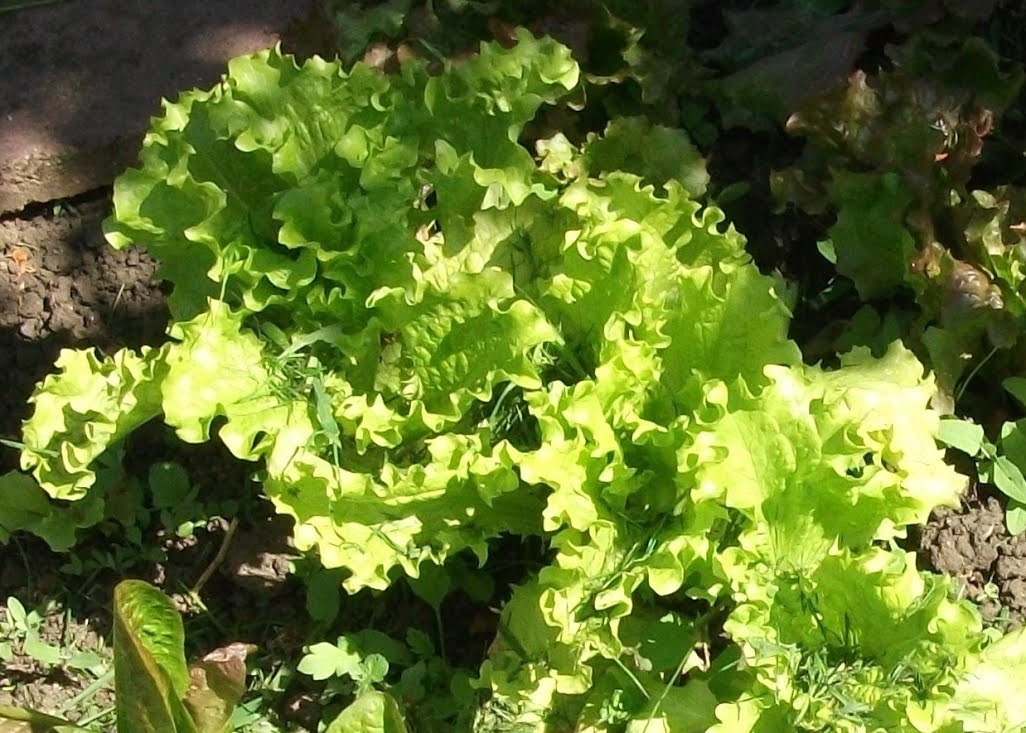
Peas and Mangetout
Blauwschokker – Here’s a really nice pea with short, sweet and numerous pods of an eye-catching, and even novelty, blue colour. Eat them raw when young and sweet or save them for winter. Both nice.
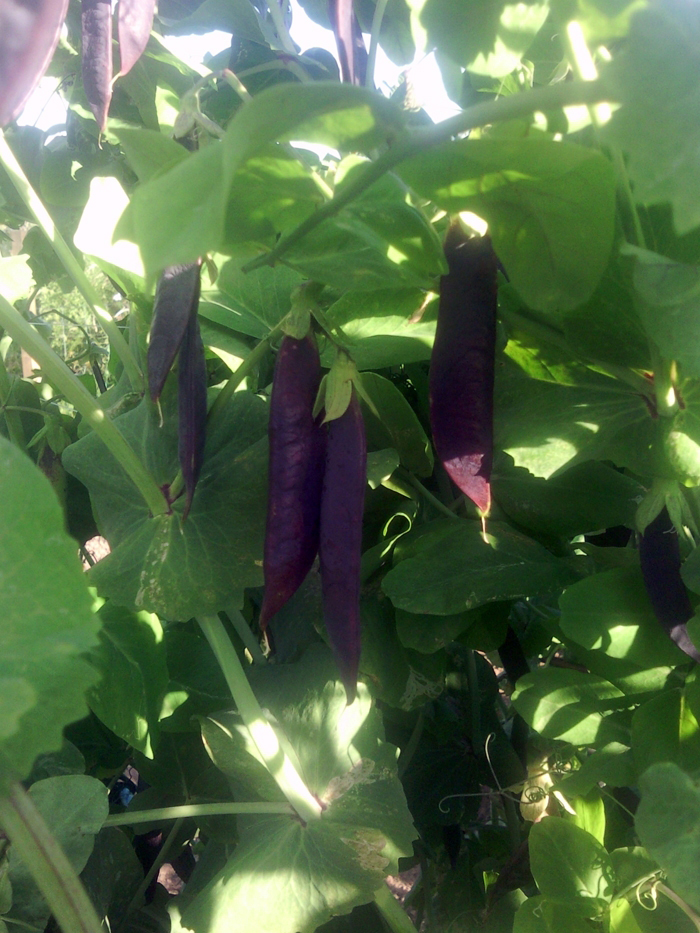
They dry well on the plant and the colour, of course, helps you to find them. It grows to six-foot(+) with plenty of pretty Pink-Purple flowers.
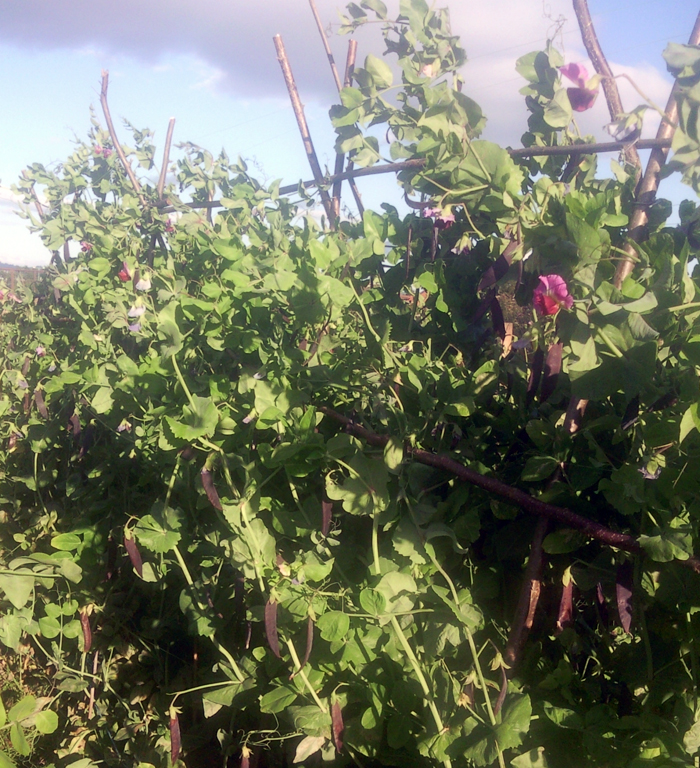
Dwarf Grey Sugar – This is a small mangetout pea with short, sweet and numerous pods. Produces lots if picked frequently. However, the plants are not particularly dwarf and definitely benefit from pea sticks. About 4 foot tall. Purple flowered. My donor was Melanie Inangelo from Maine, USA.
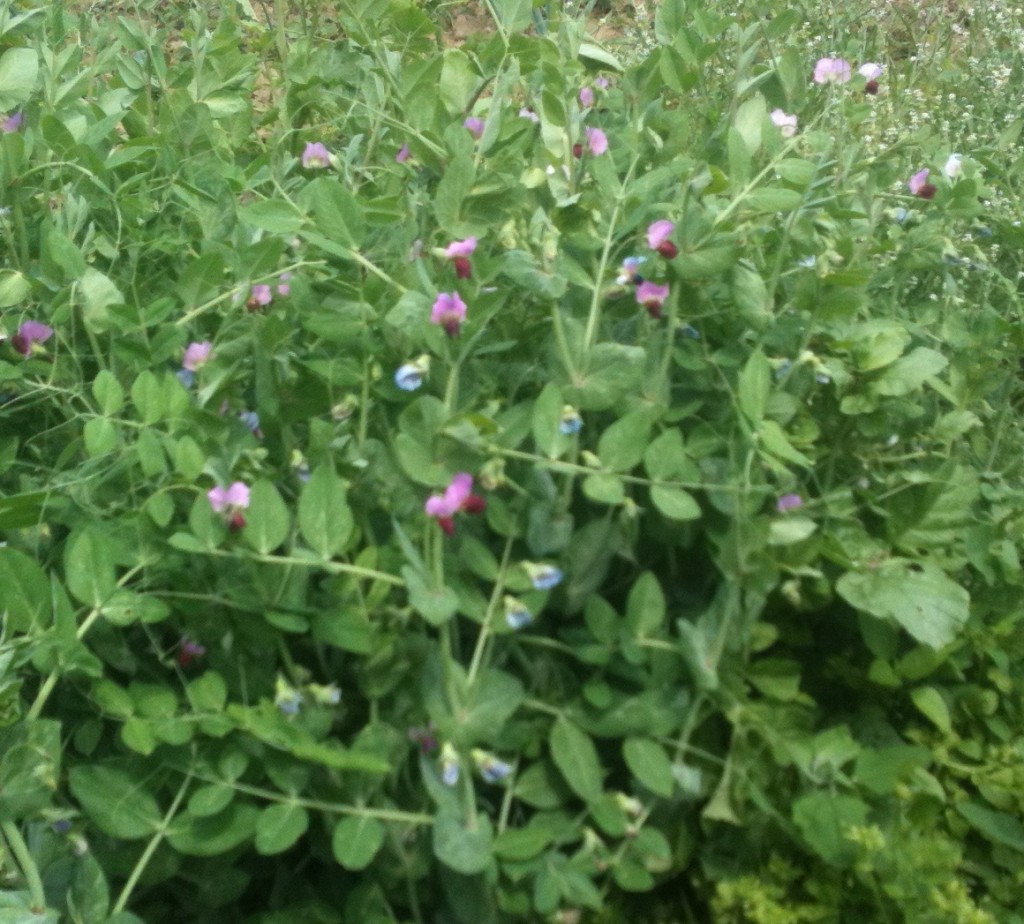
‘Eat Me’ Mangetout – (Sorry, no pictures) These were given to me by a friend on our allotments. Steve, the owner of the local Chinese Take-Away, gave me some of these his wife had sent over from Hong Kong, to try. Apparently, and Steve’s English is far better than my Chinese or Cantonese, they are from his wife’s mothers’ plot in Hong Kong. Other than that, they are big, juicy, almost translucent pods that are so full of sweet juicy flavour it would almost be wrong to cook them. They are nearly the equivalent of a small drink and I’m sure kids will love them as a way of curbing their thirst on those lengthening, hot, early summer days…. Enjoy. Needs 4-6ft supports.
Elisabeth Pea – This is a mangetout pea from Switzerland which Elisabeth (my mother) bought. She shared her packet with me. One of the pea flower pairs on my plants had mutated to pink and white. The others were all purple. I marked the pink pair of flowers and grew the seeds separately. The plants are just like the original variety in every respect, with the exception of the flower colour, which has remained pink. They are not fasciated like the Salmon Flowered we received last year. This mangetout pea is still producing now (late August) from a February sowing. The pods are up to 2 inches long, shorter later in the season and very prolific. Plants are around the 5ft mark, a bit taller this year with all the rain in spring and early summer.
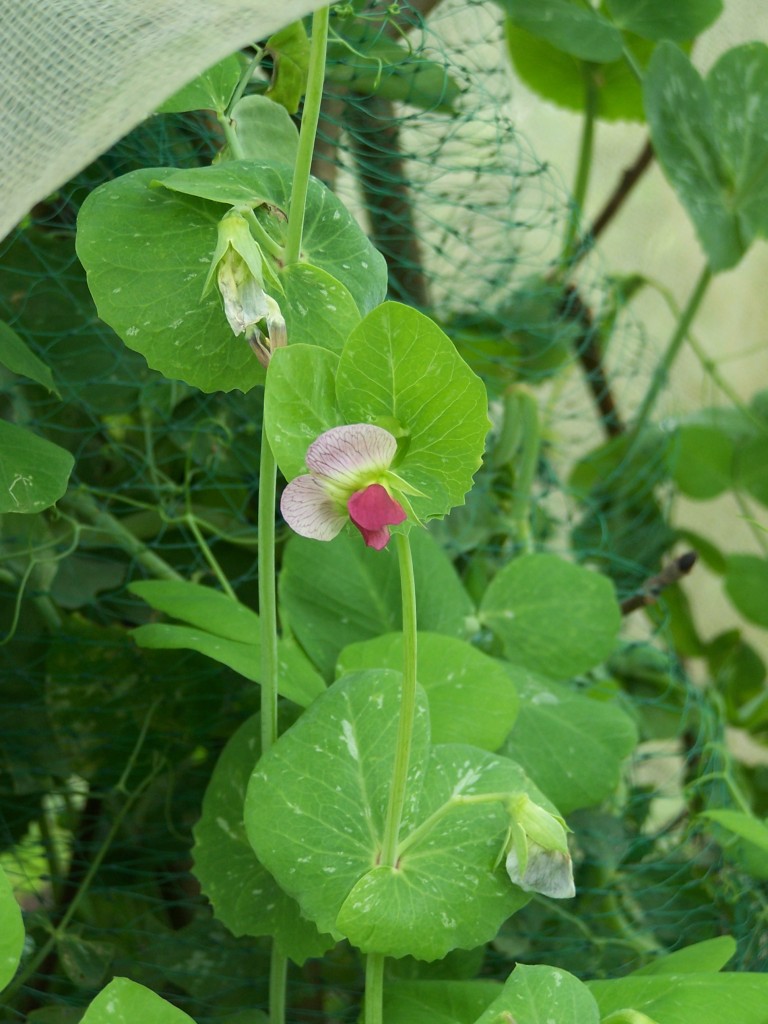
Opal Creek – My seeds came from a swap with the late Dan McMurray. We’ve already had pea Goldensweet in the seed circle and this crescent moon shaped snap pea has been bred from Goldensweet by Alan Kapuler. Tall plants, with numerous peas and very heat tolerant. This pea was quite late here and was one of the last ones to stop producing. A really eye-catching pea and a star performer. And sweeter and tastier than Goldensweet to boot.
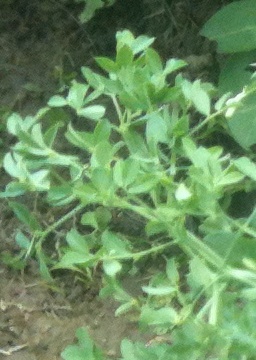
Spring Blush – The famous plant breeder Alan Kapuler used the Parsley Pea (above) and started breeding with it as one parent. Parsley type tendrils crossed with ordinary pea tendrils turned into what he calls ‘hypertendrils’ a mass of tendrils that hold peas together or to a support much better than ordinary pea tendrils. The pea is a fairly big green snap pod pea with a pink hue or blush on the pods.
Scorzonera Long black: Scorzonera is hardy and slow growing, so sow fairly early. It’s also a perennial so the small ones can be left to grow some more next year. Unlike carrots and parsnips, they can even be eaten after they’ve produced seed.
Betimes Macbeth
One of Tom Wagner’s varieties, bred to be very early and productive. The plants are low growing, determinate and do well in cooler conditions. They produce large cherry size fruit, ripening to a very intense red. Flesh is thick and the fruit stays firm for quite a while both on the vine and when picked. This variety produced very well this season despite the poor summer, early to set and just carried on going. A definite for me next season and I think a good candidate for an early sowing or an autumn cropper. Avoided blight pretty well a few leaves were affected early on, but once removed recovered well. This variety doesn’t produce many seeds per fruit. Jb
http://threedaughtersfarm.com/wp/?p=232
True Potato Seed – TPS
Skagit Magic
I’m not sure what generation this is, but this is a mix of seed saved from Tom Wagner’s Skagit Magic. Bred for blight resistance in the US, hopefully some clones will have resistance to European Blight, Blue 13. The flowers on these potato plants are stunning and they keep flowering for a long period. A range of tuber types produced, many are white but some have beautiful purple markings too. A tasty potato, cooks well, good boiled/steamed and mashed. Skagit Magic seems to be a late main crop, although a few clones will produce much earlier. Needs a fair bit of growing space, even so I’ve found tubers are fairly compact in size. jb

